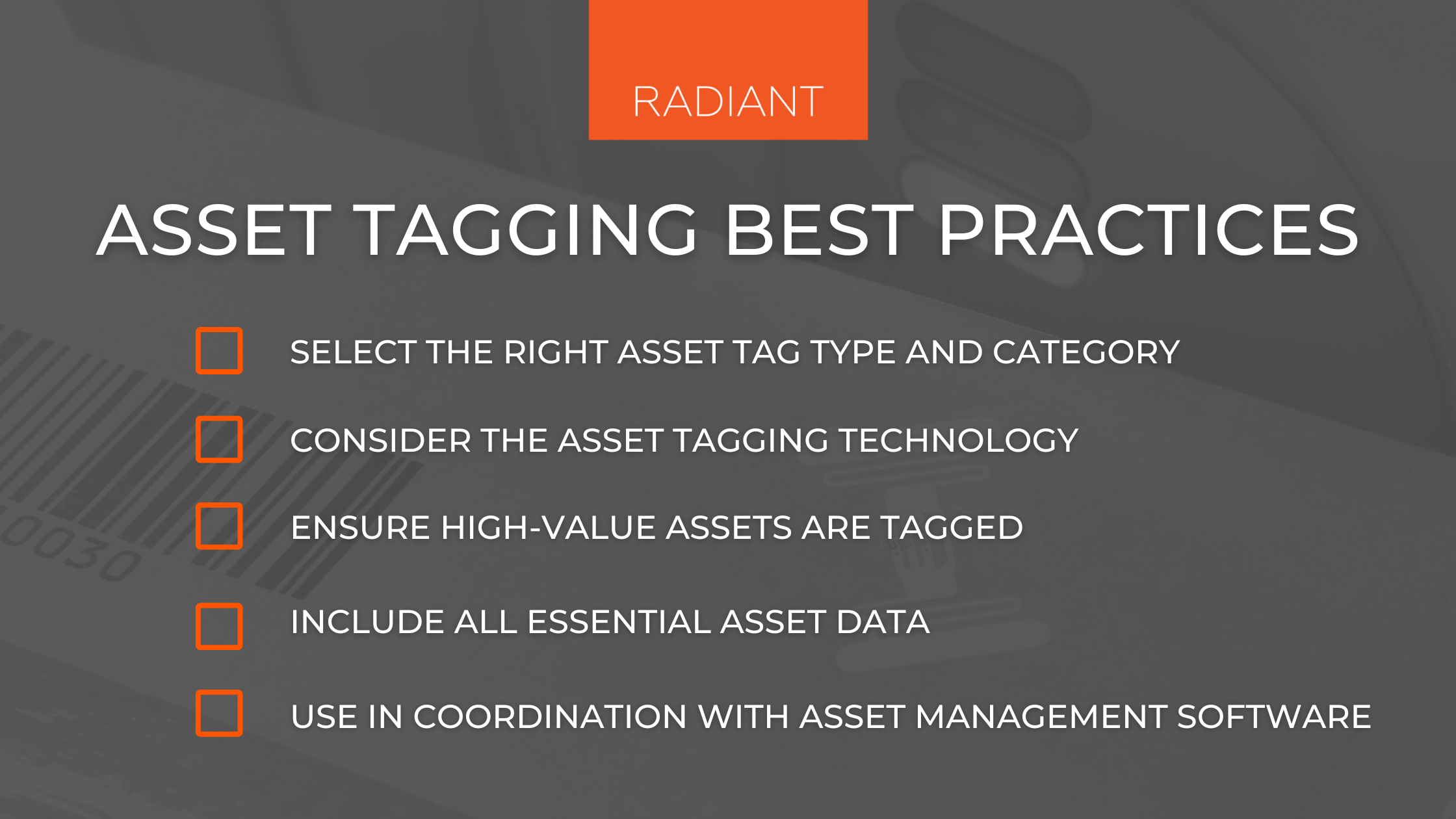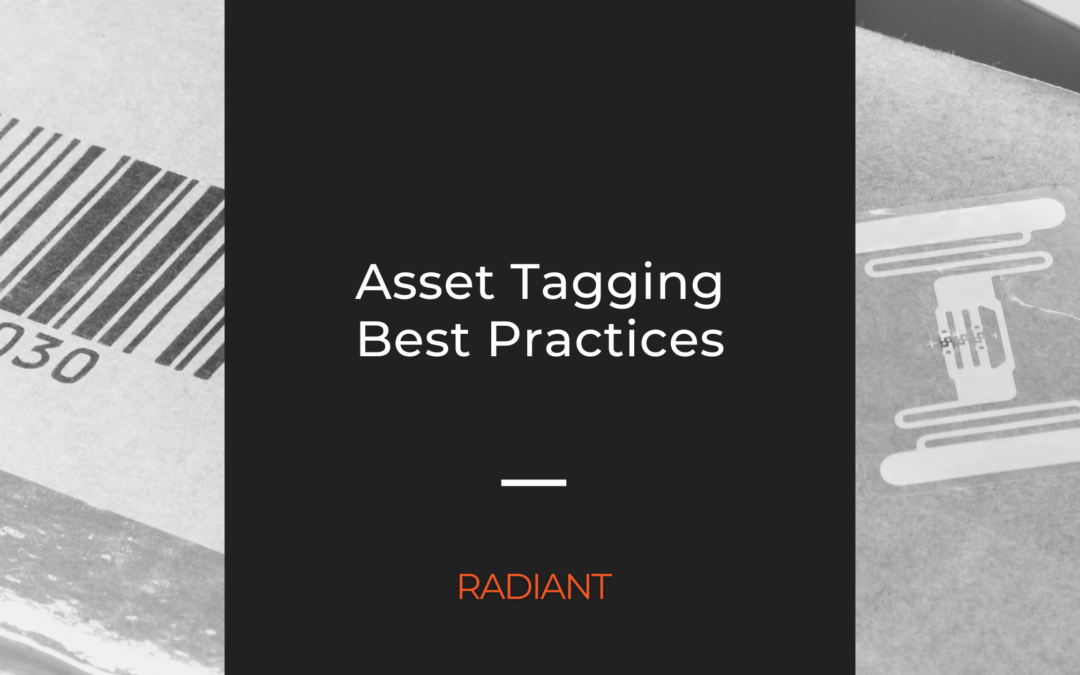When it comes to protecting your business’s valuable assets, implementing a good asset tagging system is crucial. By properly tagging your fixed assets, you can keep track of them more easily and ensure that they are not stolen or misplaced.
There are a few best practices to follow when implementing an asset tagging system for your business. Here’s what you need to know.
What is Asset Tagging?
Asset tagging is the process of applying physical tags to assets in order to track and manage them. The tags can be applied to any asset, including but not limited to: computers, equipment, tools, vehicles, containers, and reusable transport items (RTIs).
The tags typically contain information such as the asset’s serial number, purchase date, and owner. Asset labels can be used for a variety of purposes, such as: tracking asset location, monitoring asset usage, verifying asset ownership, tracking maintenance history, and reducing asset theft.
In many cases, asset tags are accompanied by asset tracking software, which helps to automate the process of tag assignment and data collection. When used together, asset tags and asset tracking software can provide a powerful solution for managing organizational assets.
What are the Benefits of Asset Tagging?
There are many benefits of asset tagging, including improved asset visibility, reduced theft and loss, and easier asset tracking.
Improving asset visibility is one of the primary benefits of asset tagging. When all assets are properly tagged, it is much easier to know what is on hand and where it is located. This can be particularly beneficial in large facilities with many assets spread out across different departments, floors, or shelves. With asset tags in place, facility managers can quickly and easily locate specific assets when needed.
Another benefit of asset tagging is that it can help to reduce theft and loss. When assets are properly tagged and tracked, it is much more difficult for them to go missing without anyone noticing. In addition, tamper-evident tags can deter would-be thieves from targeting tagged assets in the first place. If an asset does happen to go missing, the unique identification numbers on the asset tag can be used to track it down.
Finally, asset tags make it much easier to track assets over time. This information can be used for a variety of purposes, such as monitoring asset usage or verifying that assets are being properly maintained through preventative maintenance. Asset tracking data can also be helpful when making decisions about replacement or repair.
In short, asset tags provide a wealth of information that can be used to improve asset management practices.
What are the Most Common Mistakes Made when Asset Tagging?
The asset tagging process is important for keeping track of your company’s valuable equipment, but it’s also easy to make mistakes that can cause problems down the road.
One common mistake people make when asset tagging is failing to account for all of their assets. A physical count should be taken of all assets, including office furniture, computer equipment, and tools. Once all of the assets have been accounted for, each asset should be given a unique identifier.
Another common mistake is failing to keep track of asset location. It is important to know not only where an asset is located, but also who is responsible for it. This information should be included in the asset tag database.
Finally, people often forget to update their asset tags when changes are made. For example, if an asset is moved to a new location or transferred to a new owner, the asset tag database should be updated accordingly.
By avoiding these common mistakes, people can ensure that their asset tagging system is effective and efficient.
Asset Tagging Best Practices
There are many different asset tagging systems available, and the best choice for your organization will depend on your specific needs. However, there are some general best practices that should be followed when implementing asset tags, which we’ve outlined below:

Select the Right Asset Tag Type and Category
Selecting the right asset tags is essential for any company that wants to implement an asset tagging program. There are a variety of factors to consider when choosing asset tags, including the material, size, and shape of the tag.
The type of asset being tagged will also dictate the best type of asset tag to use. For example, metal asset tags are ideal for tagging tools and equipment, while barcode asset tags are better suited for tracking inventory.
By carefully selecting the right asset tags, companies can ensure that their asset tagging program is effective and efficient.
Consider the Asset Tagging Technology
There are several different technologies available, each with its own advantages and disadvantages.
- RFID tags are one of the most popular options, as they can be read from a distance and do not require a line of sight. However, they are also relatively expensive.
- Barcodes are another popular option, as they are inexpensive and easy to use. However, barcodes can only be read from close range and require a line of sight.
- QR codes are a newer option that combines the best of both worlds: they can be read from a distance and do not require a line of sight. However, they are not yet as widely used as RFID tags or barcodes for high-value asset tracking since there remain concerns over their susceptibility to fraud.
- GPS tags are another option that can be used for asset tracking. GPS tags have the advantage of being able to be tracked in real time. However, they require a subscription to a GPS service.
- BLE tags are similar to GPS tags, but they use Bluetooth Low Energy instead of GPS. BLE tags have the advantage of being less expensive than GPS tags. These often include a barcode or QR code on the tag as well. However, they have a shorter range and may not work in all asset tracking applications.
- NFC tags are another option that can be used for asset tracking. NFC tags have the advantage of being able to be read from a distance; however, they require an NFC-enabled device in order to be read.
In general, there is no one “best” asset tagging technology; the best technology for a particular application will depend on the specific needs of the asset tracking application.
Ensure High-Value Assets Are Tagged
One of the best practices for asset tagging is to ensure that high-value assets are tagged. This helps to ensure that these assets can be properly tracked and accounted for.
High-value assets can include things like computers, tools, and other essential equipment. By tagging these items, you can be sure that they are properly labeled and accounted for. This can help to reduce the chances of them being lost or stolen.
Additionally, it can help you keep track of when these items need to be serviced or replaced. By ensuring that high-value assets are tagged, you can help to protect your investment and avoid potential problems down the road.
Include All Essential Asset Data
Asset tags serve an important purpose in organizations and it’s critical that asset tags include all essential asset information in a consistent manner. This allows for accurate asset tracking and prevents confusion or errors. There are a few things that should be included on every asset tag:
- The asset’s ID number
- A description of the asset
- The asset’s location
- The date the asset was acquired
By including all of this information on every asset tag, organizations can ensure that their assets are accurately tracked and accounted for. This is an important best practice that can save time, money, and frustration down the line.
Use in Coordination with Asset Management Software
Asset tags are an essential part of an asset management system, providing a way to track and identify assets. However, asset tags alone are not enough to effectively manage assets.
Asset management software provides a centralized system for tracking asset information, including location, status, and maintenance records. This information can be used to generate reports, set alerts, and make informed decisions about asset utilization.
Organizations can maximize the efficiency of their asset tracking system by using asset management software in coordination with asset tags.
By following these best practices, you can ensure that your asset tagging system is effective and efficient.
Are your Assets Properly Tagged?
Proper asset tagging is key to maintaining an accurate and up-to-date asset database. By selecting the right tag type, considering asset tagging technology, including all important asset data, and ensuring high-value assets are tagged, businesses can reap a variety of benefits including increased security, streamlined operations, and reduced costs.
To explore these benefits further and learn more about best practices for asset tagging, request a demo of our asset management software below.
Last Updated on September 12, 2022 by Radiant

